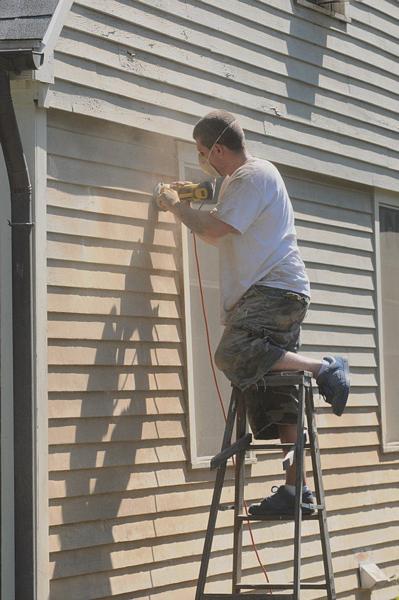New Shawn McCadden Videos About The EPA RRP Rule; RRP Information For Renovators
 I recently completed a series of seven videos about the new EPA RRP rule. The RRP videos were done for Remodeling magazine. They are posted to the Remodeling TV area of Remodeling magazine’s web site.
I recently completed a series of seven videos about the new EPA RRP rule. The RRP videos were done for Remodeling magazine. They are posted to the Remodeling TV area of Remodeling magazine’s web site.
The videos are sponsored by The Home Depot. The video series is titled “The Insider's Guide to the EPA's Renovation, Repair and Painting Rule”. The series covers critical information about the Environmental Protection Agency's RRP rule and certification process, and explains how the rule may affect your business.
I had a lot of fun doing the videos. Lots of great people donated their time, knowledge and expertise. I also learned a lot from  writing the script, interviewing contributors, editing the script with the magazine’s editor Sal Alfano, reviewing the raw footage, and working with the videographer, Chuck Greeen of Perpetual Motion Pictures. Working with Chuck was a unique advantage. As a fellow remodeler and Certified Renovator, Chuck not only filmed and edited the videos, he also contributed greatly to the content and success of the whole project.
writing the script, interviewing contributors, editing the script with the magazine’s editor Sal Alfano, reviewing the raw footage, and working with the videographer, Chuck Greeen of Perpetual Motion Pictures. Working with Chuck was a unique advantage. As a fellow remodeler and Certified Renovator, Chuck not only filmed and edited the videos, he also contributed greatly to the content and success of the whole project.
Here is a list of the videos, a brief description of what is discussed in each as well as links to view them:
Video One: The EPA RRP Rule and Your Business
This video covers the business responsibilities, associated liabilities and risks related to the RRP Rule. Kermit Baker, Senior Research Fellow at Harvard University's Joint Center for Housing Studies stresses that remodelers need to become experts in this area or leave the work to others who are. Attorney Mike Sams of Kenney & Sams, P.C. warns about the legal liabilities for failure to follow the regulations. Shawn McCadden discusses the firm and worker certification process, related fees as well as certified renovator and firm responsibilities.
Video Two: RRP Training
This video covers the worker training requirements of the rule and the content of the EPA Certified Renovator training class. Shawn McCadden also discusses the importance and benefits of choosing a training class conducted by a training instructor with real life renovation experience.
Video Three: EPA RRP Notification Requirements
The EPA RRP rule specifies certain notification requirements depending on where the work is done and who occupies and or visits the building being renovated. This video covers these requirements, related firm documentation requirements as well as the information and documentation that must be given to property owners and others. Shawn McCadden also discusses many of the important details that must be included in the required documentation.
Video Four: RRP Work Practices
This video includes a summary of the required lead-safe work practices required under the RRP Rule. Shawn McCadden walks through critical considerations related to the rule that must be followed to stay in compliance with the rule, protect occupants and workers and to control costs. Shawn also discusses interior and exterior cleaning and cleaning verification requirements.
Video Five: RRP Record Keeping
Inspection of the required documentation under the rule will be a major enforcement tool used by EPA. In this video Shawn McCadden discusses the required documentation related to worksite activities as well as many business administration activities. Mark Paskell of the Contractor Coaching Partnership shares a few of the many methods EPA will have at their disposal to inspect and verify a firm’s compliance with the rule. Shawn adds several more methods to Mark’s list and also discusses the penalties and fines EPA can assess on violators.
Video Six: Exemptions to RRP Work Practices
In this video Shawn McCadden gives examples of when, where and why the RRP rule and work practices are not required under the rule. Shawn stresses that even if the work practices are not required under the RRP rule, your business will still be liable if lead poisoning and or contamination results from the way work is performed. Shawn and contractor insurance expert Tom Messier of Mason and Mason Insurance both stress the importance of verifying proper and adequate insurance coverage to protect your business, available coverage options as well as related costs for coverage.
Video Seven: Business Considerations and Summary
Shawn Mccadden stresses that this new rule is a game changer. Shawn tells us businesses must take this new rule seriously and adjust their business practices accordingly to protect profits and control liabilities. Mark Paskell of the Contractor Coaching Partnership stresses that contractors should verify that the documentation forms they use will comply with the rule and also assist the business in managing and performing the work. Gerry McGonagle of Belfor Property Restoration offers his advice on qualifying the right employees to do the work. Shawn also discusses some of the new responsibilities the rule brings with it for employees in all positions within the business.
If you are looking for forms and signage to help you with comply with the EPA RRP rule, I recommend you check out what The Lead Paint Forms Store has to offer.
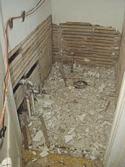 According to Medscape Today, investigations conducted during 2006-2007 in New York state (excluding New York City) for 972 children with Blood Lead Levels (BLLs) ≥20 µg/dL, RRP activities were identified as the probable source of lead exposure in 139 (14%) of the 972 children. Resident owners or tenants performed 66% of the RRP work that was determined to have caused the poisoning, which often included sanding and scraping (42%), removal of painted materials or structures (29%), and other activities (29%) that can release particles of lead-based paint. Although this study only included one state, we can probably assume other states with older housing would likely have similar findings.
According to Medscape Today, investigations conducted during 2006-2007 in New York state (excluding New York City) for 972 children with Blood Lead Levels (BLLs) ≥20 µg/dL, RRP activities were identified as the probable source of lead exposure in 139 (14%) of the 972 children. Resident owners or tenants performed 66% of the RRP work that was determined to have caused the poisoning, which often included sanding and scraping (42%), removal of painted materials or structures (29%), and other activities (29%) that can release particles of lead-based paint. Although this study only included one state, we can probably assume other states with older housing would likely have similar findings. Although I agree renovators should be required to work lead-safe, I suggest that the RRP rule falls way too short in preventing lead poisoning. Allowing home owners and tenants to do RRP work without the knowledge and proper training required should be considered a travesty. Without understanding how lead poisoning happens and how to perform the work in a lead-safe manner, these parents are often unknowingly poisoning their children.
Although I agree renovators should be required to work lead-safe, I suggest that the RRP rule falls way too short in preventing lead poisoning. Allowing home owners and tenants to do RRP work without the knowledge and proper training required should be considered a travesty. Without understanding how lead poisoning happens and how to perform the work in a lead-safe manner, these parents are often unknowingly poisoning their children.
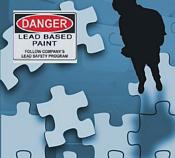 Looking for accurate information about the EPA RRP rule?
Looking for accurate information about the EPA RRP rule?  The EPA sent out the press release below to announce National Lead Poisoning Prevention Week. Although the announcement mentions the RRP Rule and that contractor training and certification are required, it certainly falls short in giving consumers sound advice about having renovations done at their homes. Earlier this year many in the industry expressed this same concern about the
The EPA sent out the press release below to announce National Lead Poisoning Prevention Week. Although the announcement mentions the RRP Rule and that contractor training and certification are required, it certainly falls short in giving consumers sound advice about having renovations done at their homes. Earlier this year many in the industry expressed this same concern about the  Legitimate businesses have been demanding that EPA enforce the rule and go after illegally operating renovators. This announcement could have assisted in that effort. Had the announcement encouraged consumers to check for and report violators of the rule perhaps we could protect more children. In effect, by not adequately enforcing this rule, the gap between legitimate businesses and the underground economy is widening.
Legitimate businesses have been demanding that EPA enforce the rule and go after illegally operating renovators. This announcement could have assisted in that effort. Had the announcement encouraged consumers to check for and report violators of the rule perhaps we could protect more children. In effect, by not adequately enforcing this rule, the gap between legitimate businesses and the underground economy is widening. 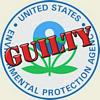

 Lead Paint Hazard is a legal term. The following information is from the Electronic Code of Federal Regulations, Title 40: Protection of Environment,
Lead Paint Hazard is a legal term. The following information is from the Electronic Code of Federal Regulations, Title 40: Protection of Environment,  (3) Any chewable lead-based painted surface on which there is evidence of teeth marks.
(3) Any chewable lead-based painted surface on which there is evidence of teeth marks. I recently completed a series of seven videos about the new EPA RRP rule. The RRP videos were done for Remodeling magazine. They are posted to the Remodeling TV area of Remodeling magazine’s web site.
I recently completed a series of seven videos about the new EPA RRP rule. The RRP videos were done for Remodeling magazine. They are posted to the Remodeling TV area of Remodeling magazine’s web site. writing the script, interviewing contributors, editing the script with the magazine’s editor Sal Alfano, reviewing the raw footage, and working with the videographer,
writing the script, interviewing contributors, editing the script with the magazine’s editor Sal Alfano, reviewing the raw footage, and working with the videographer, 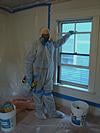 Renovators doing RRP work definitely need to know the difference between renovations and abatement. Unless specifically licenced to do so, renovators are not allowed to do abatement work. Renovators would be wise to make sure property owners know the difference as well. Employees should also be clear on the difference between renovations vs abatement, so as not to misrepresent the work they are doing when discussing a remodeling project with clients and prospects.
Renovators doing RRP work definitely need to know the difference between renovations and abatement. Unless specifically licenced to do so, renovators are not allowed to do abatement work. Renovators would be wise to make sure property owners know the difference as well. Employees should also be clear on the difference between renovations vs abatement, so as not to misrepresent the work they are doing when discussing a remodeling project with clients and prospects.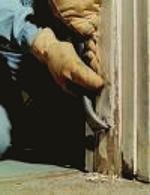 A project resulting in the permanent removal of lead paint hazards, conducted by a company who, through its name or promotional literature, represents, or advertises to be in the business of performing lead paint activities.
A project resulting in the permanent removal of lead paint hazards, conducted by a company who, through its name or promotional literature, represents, or advertises to be in the business of performing lead paint activities. Abatements are not covered by the RRP rule.
Abatements are not covered by the RRP rule. Massachusetts, one of the states delegated by EPA to administer and enforce the RRP rule, released a new form and protocol to be used by Massachusetts licensed lead inspectors when doing testing for lead prior to a RRP project. Although under the Massachusetts and EPA RRP rules a certified renovator can use EPA approved test kits to do this testing, as an alternative some home owners and renovators may elect to have the testing done by a lead testing professional. The following article was written by
Massachusetts, one of the states delegated by EPA to administer and enforce the RRP rule, released a new form and protocol to be used by Massachusetts licensed lead inspectors when doing testing for lead prior to a RRP project. Although under the Massachusetts and EPA RRP rules a certified renovator can use EPA approved test kits to do this testing, as an alternative some home owners and renovators may elect to have the testing done by a lead testing professional. The following article was written by 

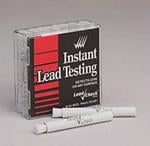 RRP Assessment report or from a Lead Safe Renovator who has used an EPA approved lead based paint test kit to test surfaces for lead, to all tenants or potential buyers.
RRP Assessment report or from a Lead Safe Renovator who has used an EPA approved lead based paint test kit to test surfaces for lead, to all tenants or potential buyers.
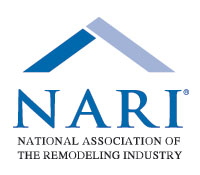 Fortunately for me, in the early days of owning my remodeling business, I learned a lot about lead and lead safe work practices through the NARI/HUD Lead Safe Remodeler training program that came out in the mid 1990’s. The current Certified Renovator training is only one day and really only teaches attendees how to contain the dust and debris. Different than the current class, the NARI/HUD class was two days long and actually thought us lead-safe work practices that eliminated or significantly reduced the creation of lead dust and debris. Attending that class was definitely worth the investment of time and money. Both I and my employees changed the way we thought about the work we did and the methods we used going forward.
Fortunately for me, in the early days of owning my remodeling business, I learned a lot about lead and lead safe work practices through the NARI/HUD Lead Safe Remodeler training program that came out in the mid 1990’s. The current Certified Renovator training is only one day and really only teaches attendees how to contain the dust and debris. Different than the current class, the NARI/HUD class was two days long and actually thought us lead-safe work practices that eliminated or significantly reduced the creation of lead dust and debris. Attending that class was definitely worth the investment of time and money. Both I and my employees changed the way we thought about the work we did and the methods we used going forward. Lead poisoning can occur when people are exposed to large or small amounts of lead over time. Lead builds up in the body and may cause temporary or permanent damage. A blood lead test can show whether your body has absorbed a dangerous amount of lead. A high blood lead level is an indication that lead is building up in the body faster than it can be eliminated.
Lead poisoning can occur when people are exposed to large or small amounts of lead over time. Lead builds up in the body and may cause temporary or permanent damage. A blood lead test can show whether your body has absorbed a dangerous amount of lead. A high blood lead level is an indication that lead is building up in the body faster than it can be eliminated. Later Signs and Symptoms:
Later Signs and Symptoms: